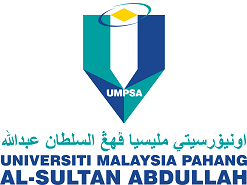OPTIMIZATION ON DYEING UPTAKE EXHAUSTION PERCENTAGE OF BETACYANIN PIGMENT EXTRACTED FROM HYLOCEREUS POLYRHIZUS PEEL ONTO THE SPUN SILK YARN USING CENTRAL COMPOSITE DESIGN
DOI:
https://doi.org/10.15282/jceib.v1i1.3813Keywords:
natural dye, exhaustion, central composite design, spun silk dyeing, betacyanin extractAbstract
The prior motivation of this research study is to determine the ideal condition for dyeing process of spun silk yarn with natural dye extracted from dragon fruit peel using a central composite design. The peel of dragon fruit is contained betacyanin pigment can be utilized to be a natural dye which normally the peel of dragon fruit was discarded as a waste. As the betacyanin pigment was considered to be a newest red dye color in textile
application, it is necessary to determine the optimal value for its specific dyeing process. In this experiment, natural dye was extracted from dragon fruit peel using water extraction with the acidified water as a medium. The natural dye was then applied onto the spun silk yarn at different dyeing time (60 – 90 min), pH (3 – 5) and dye concentration (100 –120 g/L). The dye-uptake of natural dye was measured using UV-Vis spectrophotometer. The result of dye-uptake percentage was employed using analysis of variance (ANOVA). By ANOVA, the dyeing condition was determined as pH of 2, dyeing time of 95 min and the dye concentration of 110 g/L which is generated from the mathematical model. Using the ideal condition, the dye uptake percentage was determined to be 51.58% to a desirability value of 0.995. So, it is concluded that dyeing condition for the optimal value of dyeing uptake exhaustion of betacyanin pigment onto the spun silk can be determined using CCD.




